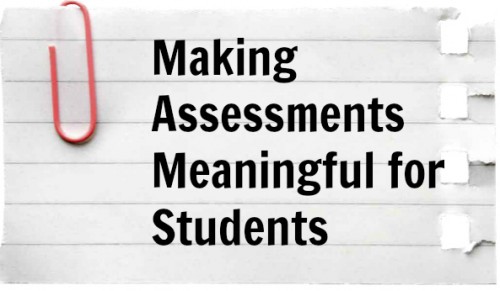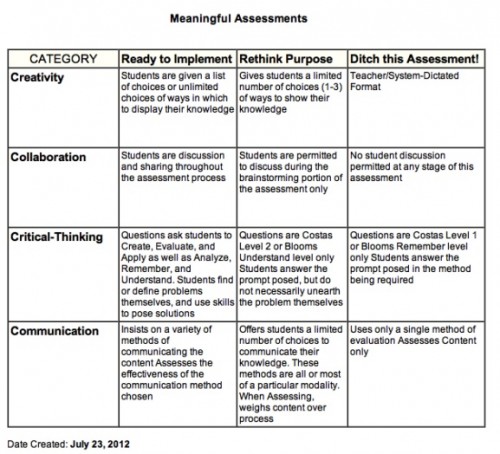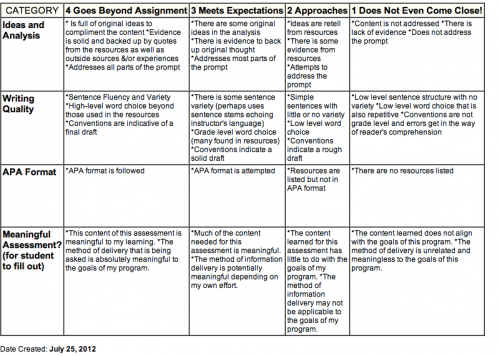I think meaningful assessments can come in many shapes and sizes. However, to be thoroughly engaging and to draw the best work out of the students, assessments should be aligned with real-world skills.
When I think about my own definition of a “Meaningful Assessment,” I think the test must meet certain requirements. The assessment must have value other than “because it’s on the test.” It must have value to the individual student who is taking it, should incorporate skills that students need for their future, and it must assess skills other than the mere content. It must also test how the students communicate their content.
CRITERIA FOR A MEANINGFUL CLASSROOM ASSESSMENT
To address these requirements, I ask myself the following guided questions:
- Does the assessment involve Project-Based Learning?
- Does it allow for student choice of topics?
- Is it inquiry based?
- Does it ask that students use some level of Internet literacy to find their answers?
- Does it involve independent problem solving?
- Does it incorporate the 4Cs?
- Do the students need to communicate their knowledge via writing in some way?
- Does the final draft or project require other modalities in its presentation? (visual, oral, data, etc.)
Clearly not all assessments achieve every single characteristic listed above. But in our attempt to address some of these elements, we will have made our classroom assessments so much more meaningful.
So how can high-stakes assessments be meaningful to students? For one thing, high-stakes tests shouldn’t be so high-stakes. It’s inauthentic. They should and still can be a mere snapshot of ability. Additionally, those occasional assessments need to take a back seat to the real learning and achievement going on in everyday assessments observed by the teacher.
The key here, however, is to assess every day. Not in boring, multiple-choice daily quizzes, but in informal, engaging assessments that take more than just a snapshot of a student’s knowledge at one moment in time.
When assessing the value of your own assessments, remember the 4 Cs and ask… do they allow for:
Creativity – Are the students creating or just regurgitating? Are they being given credit for presenting something other than what was described?
Collaboration – Have they spent some time working with others to formulate their thoughts, brainstorm, or seek feedback from peers?
Critical Thinking – Are the students doing more work than the teacher in seeking out information and problem solving?
Communication – Does the assessment emphasize the need to communicate the content well? Is there writing involved as well as other modalities?
RUBRIC ON MEANINGFUL ASSESSMENTS
So as an activity for myself, I created a rubric to look at whenever I was wondering if an assessment was going to be a waste of time or was going to connect with the students. I thought I’d share it here:
Additionally, if you want to encourage students to really focus on the requirements on a rubric, add a row that’s only for them to fill out for you. That way, the rubric’s feedback is for you too. Here’s an example of a quick rubric I designed that students could fill out. By also giving them a space to fill out, they own the rubric even more. It’s one way the students and I can learn reciprocally.
So how do you ensure that your classroom assessments are meaningful?
Heather Wolpert-Gawron is the author of the Project Based Writing series. This post is an excerpt from Heather’s new book, Writing Behind Every Door: Teaching Common Core Writing Across the Content Areas (Routledge, 2014). You can follow Heather at her website: www.tweenteacher.com.



